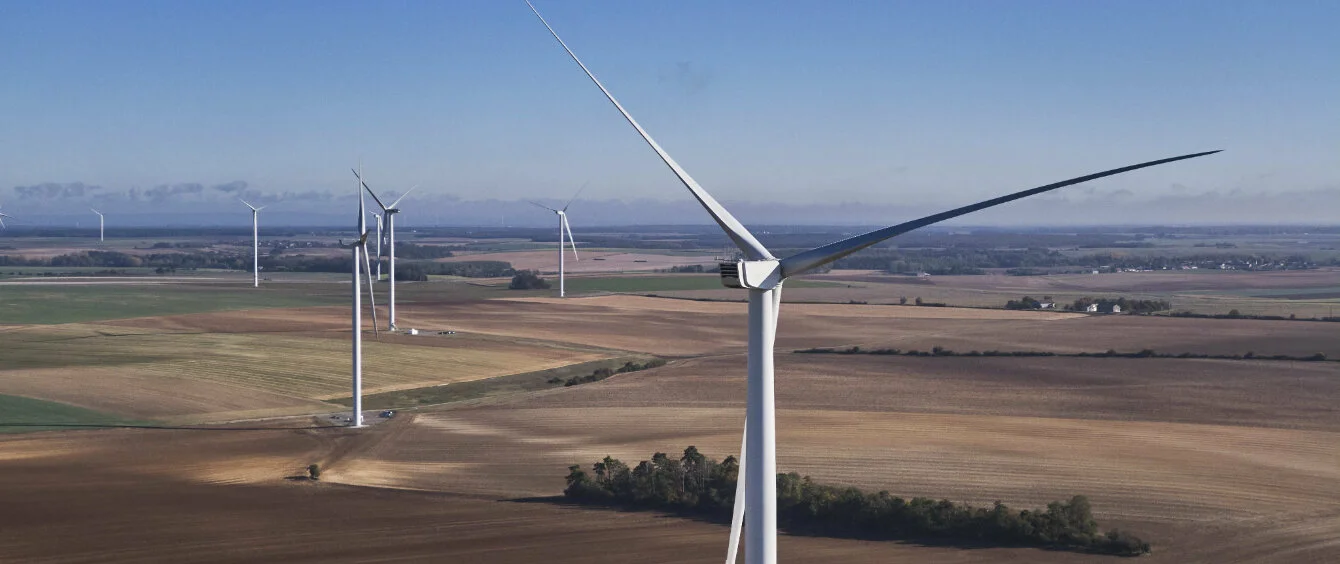The European Commission is calling on the renewable energy industry to deliver 480 GW of wind capacity and 420 GW of solar by 2030 to improve Europe’s security of energy supply. For the wind sector this means an additional 30 GW of capacity on top of already ambitious targets motivated by the climate crisis.
There is little doubt why the Commission is turning to renewable energy to the address the challenges Europe faces.
First, wind and solar, already the cheapest forms of electricity generation, have never looked so affordable as oil and gas prices rocket to new highs. Second, they are not dependent on fossil fuel imports. And, third, they generate the clean, sustainable power critical for broader economic electrification and decarbonisation.
Can the new targets be met?
The solar industry is confident. Industry organisation SolarPower Europe says that in its business-as-usual, most-likely scenario the EU could already see 672 GW of solar capacity by 2030, over 50% more than that envisaged by the European Commission. Moreover, SolarPower says with the right support and policies, in an accelerated scenario, a huge 1 TW (1,000 GW) is possible.
However, the wind industry is less certain – not about the goals, but the ability to deliver on such a scale in what is a relatively short timeframe.
The sector is already making great strides forward. Across Europe as a whole, the industry installed 17.4 GW of new capacity last year, 18% higher than in 2020, making it a record year. However, the result was 11% below forecast because of delays to many projects, according to European wind association WindEurope.
The bottom line is that the EU needs to build 32 GW of new wind capacity a year, if it is to meet its 40% renewable energy target by 2030. But with just 11 GW installed in 2021 and an expected build rate of 17.6 GW/yr from 2022-26, new construction needs to accelerate substantially to keep the EU’s Green Deal on track.
The new security of supply additions would raise the desired average annual installation rate to 35 GW/yr.
Expected new European wind installations 2022-2026 – Realistic Expectations Scenario
in gigawatts, source: WindEuropePermitting bottleneck
The problem is not ambition, says WindEurope. Governments have already set goals in line with the EU’s 2030 decarbonisation targets. In the offshore sector, official targets totalling 92 GW in fact exceed the 79 GW the EU forecasts is needed for the Green Deal.
The primary problem is permitting. According to the association, almost none of the EU’s member states meet the deadlines for permitting procedures required in the EU’s Renewable Energy Directive. Slow permitting has serious knock-on effects throughout the wind industry supply chain, holding back its expansion as it grapples with high and volatile commodity prices.
Even with front runners like Germany installing a projected 25.1 GW and the UK 15 GW of on- and offshore wind combined from 2022-26, Europe will not even come close to what is required, WindEurope says.
Policy changes are key
While the UK topped the list of new additions last year, Germany is likely to do so in 2022, reflecting changes to permitting procedures. Berlin has announced spatial planning reforms, which are expected to boost onshore installations (Link in German). The country is expected to build 19.7 GW of onshore wind and 5.4 GW of offshore wind over the next five years, making it Europe’s biggest wind market.
However, the UK will still lead in the offshore sector. Offshore installations across Europe are expected to surpass 4 GW in 2023, rising to 10 GW in 2026, with the UK accounting for nearly two-fifths of the European offshore total over the next five years. WindEurope attributes this to the UK’s “excellent Contracts for Difference support scheme” and the country’s thriving market for Power Purchase Agreements.
But permitting remains the big bottleneck, a situation recognised by the EU in its REPowerEU plan. This says permitting must be speeded up at the national level to minimise the time taken to roll out renewable energy projects and grid infrastructure improvements.
Moreover, as high energy prices dampen economic growth, the European wind and solar associations are clear about the need to double down on support for strong European-based wind and solar supply chains. These are struggling in the face of high raw material costs, yet have the potential to create tens of thousands more well-paid jobs.
Both industry associations argue that layering supply security goals on top of already ambitious climate targets means an unprecedented push towards sustainable energy, one which needs quick policy action to remove barriers to expansion.
Photo credit: RWE AG
